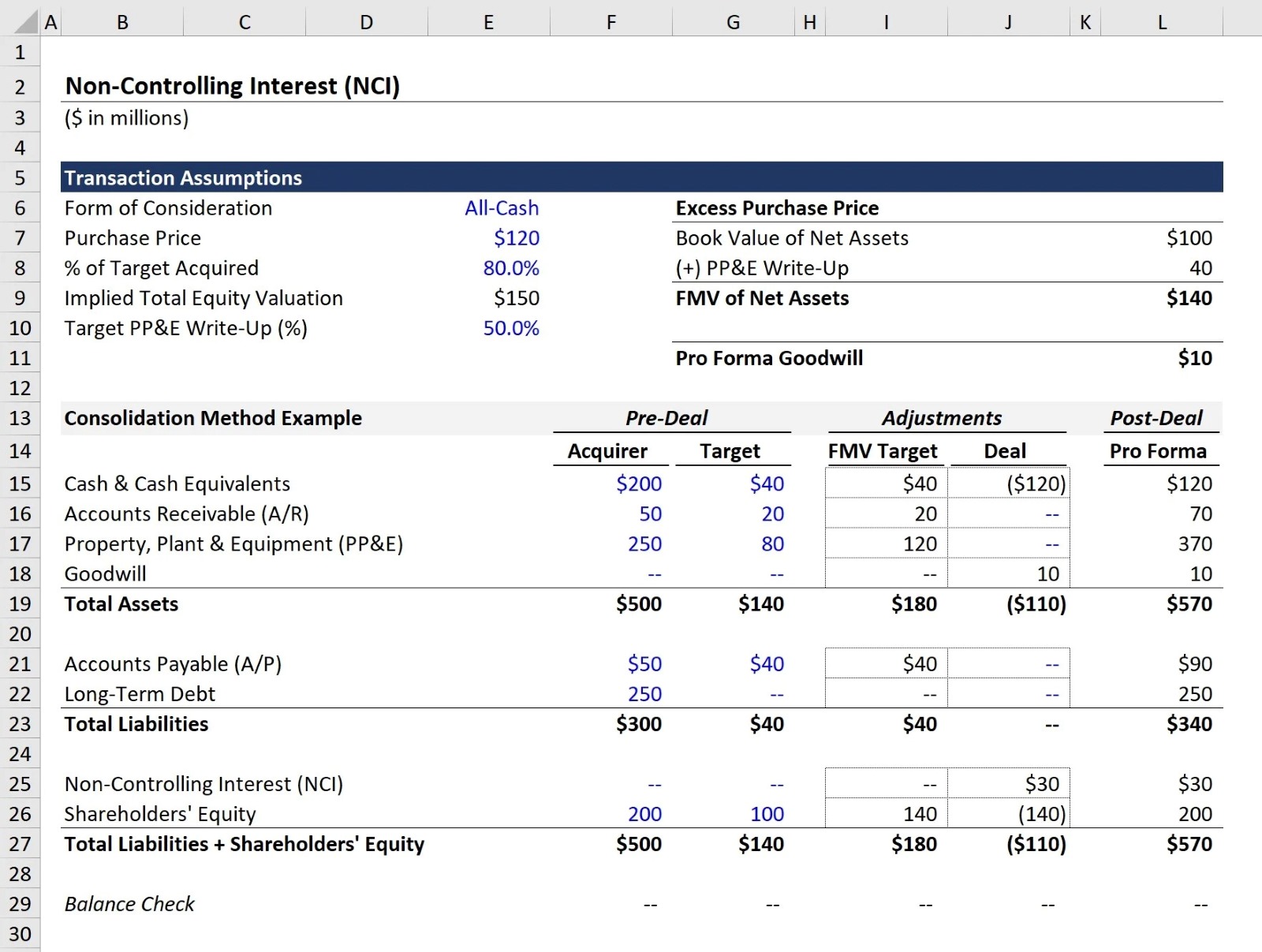

Finance
What Is A Non-Admitted Insurance Carrier?
Modified: February 21, 2024
Learn about non-admitted insurance carriers in the finance industry and how they differ from traditional carriers. Understand the implications and benefits of working with a non-admitted carrier for your insurance needs.
(Many of the links in this article redirect to a specific reviewed product. Your purchase of these products through affiliate links helps to generate commission for LiveWell, at no extra cost. Learn more)
Table of Contents
- Introduction
- Definition of a Non-Admitted Insurance Carrier
- Regulatory Requirements for Non-Admitted Insurance Carriers
- Differences between Non-Admitted and Admitted Insurance Carriers
- Reasons for Choosing a Non-Admitted Insurance Carrier
- Limitations of Non-Admitted Insurance Carriers
- Risks Involved with Non-Admitted Insurance Carriers
- Conclusion
Introduction
In the world of insurance, there are different types of carriers that provide coverage to individuals and businesses. One type of carrier that often comes up in discussions is the non-admitted insurance carrier. But what exactly is a non-admitted insurance carrier, and how does it differ from an admitted carrier?
A non-admitted insurance carrier, also known as a surplus lines carrier, is an insurance company that is not licensed by the state in which it operates. This means that it does not have to conform to the same regulations and requirements as admitted carriers.
Non-admitted carriers are often sought after when traditional insurance markets are unable to provide coverage for certain risks. They play a crucial role in the insurance ecosystem by offering specialized coverage for events or risks that are deemed too high or unique for admitted carriers to handle.
But what sets non-admitted carriers apart from admitted carriers? And why would someone choose to work with a non-admitted carrier instead? In this article, we will explore the definition of a non-admitted insurance carrier, the regulatory requirements they operate under, and the reasons why individuals and businesses may opt for their services.
Definition of a Non-Admitted Insurance Carrier
A non-admitted insurance carrier, as mentioned earlier, is an insurance company that operates without being licensed by the state in which it operates. In simpler terms, it means that the carrier does not have to comply with the same regulations and guidelines that admitted carriers do.
Non-admitted carriers are often referred to as surplus lines carriers because they provide coverage for risks that are beyond the scope of admitted carriers. These risks can include unique events, high-risk activities, or specialized industries that the traditional insurance market is unwilling or unable to cover.
Non-admitted carriers are not bound by the pricing and coverage restrictions set by regulatory bodies. Instead, they have more flexibility in determining premiums, policy terms, and coverage limits. This allows them to tailor their offerings to meet the specific needs of insured individuals or businesses.
However, it is important to note that non-admitted carriers are not completely unregulated. They must still comply with certain laws and regulations, such as financial reporting requirements and claims handling procedures. Additionally, non-admitted carriers are required to work with licensed surplus lines brokers to ensure that the coverage they provide is appropriate for the insured party’s needs.
It is also worth mentioning that non-admitted insurance is typically harder to obtain compared to admitted insurance. The process may include additional paperwork, documentation, and a more thorough underwriting review to assess the risk involved.
Regulatory Requirements for Non-Admitted Insurance Carriers
While non-admitted insurance carriers have more leeway when it comes to regulatory compliance, they are still subject to certain requirements to ensure fair practices and protect the interests of policyholders.
One key aspect of the regulatory framework for non-admitted carriers is the requirement to work through licensed surplus lines brokers. These brokers act as intermediaries between the insured party and the non-admitted carrier, ensuring that the coverage provided is appropriate and compliant with state laws. The brokers are responsible for placing the coverage with a non-admitted carrier and collecting the necessary premiums.
Non-admitted carriers are also subject to financial reporting and disclosure requirements. They must provide regular reports detailing their financial standing, reserves held, and claims paid. These reports are essential for monitoring the carrier’s financial stability and assessing its ability to meet its obligations to policyholders.
Additionally, non-admitted carriers must maintain a level of capital and surplus that demonstrates their financial capacity to handle claims and remain solvent. The specific capital requirements vary depending on the jurisdiction and the line of insurance being underwritten.
Another important regulatory requirement for non-admitted carriers is ensuring that policyholders have access to certain consumer protection measures. This includes the establishment of guaranty associations or similar entities, which can provide coverage in the event that a non-admitted carrier becomes insolvent or is unable to fulfill its obligations.
It’s crucial to note that regulatory requirements for non-admitted carriers can differ from state to state. Each state has its own laws and regulations governing surplus lines insurance, and these carriers must comply with the specific rules of the state in which they operate.
Overall, while non-admitted carriers have more flexibility compared to admitted carriers, the regulatory requirements in place aim to ensure transparency, financial stability, and consumer protection in the insurance market.
Differences between Non-Admitted and Admitted Insurance Carriers
Non-admitted insurance carriers and admitted insurance carriers may both provide coverage, but there are several significant differences between the two. These differences can impact the types of risks they cover, their regulatory oversight, and their overall approach to the insurance market.
One of the main distinctions between these two types of carriers is the requirement for licensing. Admitted insurance carriers are licensed by the state in which they operate. This means they must adhere to the regulations and guidelines set by the state’s insurance department. Non-admitted carriers, on the other hand, are not licensed by the state and are not subject to the same level of regulatory oversight.
Another key difference lies in the coverage they provide. Admitted carriers typically offer standard policies that cover common risks, such as home, auto, and liability insurance. They operate in the traditional insurance market and must comply with certain coverage restrictions and pricing guidelines set by the state. Non-admitted carriers, however, specialize in providing coverage for unique or high-risk events, industries, or activities that may be outside the scope of admitted carriers.
Non-admitted carriers also have more flexibility in terms of underwriting and pricing. They are not bound by the state’s set rates and regulations, allowing them to tailor coverage and premiums based on a more individualized assessment of risk. This flexibility can be beneficial for insured parties with unique or complex risk profiles.
Additionally, the solvency and financial stability of admitted carriers are typically subject to greater scrutiny. Admitted carriers must meet specific capital and surplus requirements to ensure they can meet their obligations to policyholders. Non-admitted carriers also have financial requirements, but they may have more flexibility in terms of the minimum capital and surplus needed.
It’s important to note that coverage from admitted carriers is generally considered more reliable and secure than coverage from non-admitted carriers. Admitted carriers are backed by the state’s guaranty funds, which provide an additional layer of protection for policyholders in the event that the carrier becomes insolvent. Non-admitted carriers do not participate in these guaranty funds, which may pose a higher level of risk for policyholders.
In summary, the main differences between non-admitted and admitted insurance carriers lie in their licensing, coverage offerings, underwriting flexibility, financial requirements, and additional consumer protections. These distinctions play a significant role in determining the types of risks they cover and the level of oversight and reliability they provide to policyholders.
Reasons for Choosing a Non-Admitted Insurance Carrier
While the traditional insurance market covers a wide array of risks, there are certain situations where individuals and businesses may turn to non-admitted insurance carriers. There are several reasons why someone might choose to work with a non-admitted carrier instead of an admitted carrier.
One of the primary reasons for choosing a non-admitted insurance carrier is the ability to obtain coverage for unique or high-risk events, industries, or activities that are not typically covered by admitted carriers. Non-admitted carriers specialize in providing coverage for these specialized risks, offering solutions that may not be available in the traditional market. This can be especially beneficial for businesses operating in niche sectors or engaging in activities with higher liability exposures.
Additionally, non-admitted carriers often offer more flexibility in underwriting and pricing. Admitted carriers are bound by state regulations and guidelines, which can limit their ability to customize coverage or adjust pricing. Non-admitted carriers have greater flexibility in assessing risk and tailoring coverage based on individualized factors. This can be advantageous for individuals or businesses with unique risk profiles that may not fit within the standard underwriting criteria of admitted carriers.
Non-admitted insurance can also provide faster coverage solutions. Admitted carriers may require a longer underwriting process, especially for complex or non-standard risks. Non-admitted carriers, on the other hand, have more streamlined processes and can provide coverage more quickly, allowing insured parties to get the protection they need without unnecessary delays.
Another reason for choosing a non-admitted carrier is the potential cost savings. While non-admitted insurance may not benefit from the same regulatory protections as admitted insurance, it can often be more competitively priced. Non-admitted carriers are not subject to the same rate restrictions, allowing them to adjust premiums based on a more tailored assessment of risk. This can result in more cost-effective coverage options for insured parties.
Finally, non-admitted carriers can offer coverage in regions or markets where admitted carriers may not be available or willing to write policies. This can be particularly relevant for businesses that operate internationally or in areas that are considered high-risk by admitted carriers. Non-admitted carriers can provide the necessary coverage in these challenging markets, ensuring that businesses can continue operations and manage their risks effectively.
While non-admitted insurance carries certain benefits, it is important to thoroughly evaluate the risks and limitations involved. Working with a reputable and financially stable non-admitted carrier and consulting with experienced insurance professionals is crucial to ensure that the coverage meets the specific needs and requirements of the insured party.
Limitations of Non-Admitted Insurance Carriers
While there are benefits to choosing a non-admitted insurance carrier, it is important to consider the limitations and potential drawbacks that come with this choice.
One of the main limitations of non-admitted insurance carriers is the lack of regulatory oversight. Non-admitted carriers are not licensed by the state and are not subject to the same level of regulatory scrutiny as admitted carriers. This means that there may be less consumer protection and fewer guarantees in place to ensure the carrier’s financial stability and ability to fulfill its obligations to policyholders.
Another limitation is that non-admitted insurance carriers may have more limited coverage options compared to admitted carriers. While non-admitted carriers excel at providing coverage for unique or high-risk risks, they may not offer the same comprehensive coverage options as admitted carriers in more standard insurance lines. It is important to carefully assess and understand the coverage limitations before deciding to work with a non-admitted carrier.
In some cases, non-admitted carriers may have higher premiums compared to admitted carriers. This is because non-admitted carriers can set their own rates based on their assessment of risk, without the same rate restrictions imposed on admitted carriers. Insured parties should carefully review and compare premium quotes from both non-admitted and admitted carriers to ensure they are making an informed decision that aligns with their budget.
In the event of a claim, policyholders of non-admitted insurance may face additional challenges. Claims processes may be more complex, as non-admitted carriers may not be bound by the same claims handling regulations as admitted carriers. Insured parties may need to work closely with their broker or legal counsel to navigate any potential hurdles in the claims process.
Lastly, non-admitted insurance carriers do not participate in state guaranty funds, which provide an additional layer of protection for policyholders in the event of carrier insolvency. This means that if a non-admitted carrier becomes insolvent, there may be limited or no recourse for policyholders to recover their losses. It is crucial to thoroughly research and assess the financial stability and reputation of a non-admitted carrier before purchasing coverage.
Despite these limitations, non-admitted insurance can still be a viable option for individuals and businesses with unique or high-risk insurance needs. The key is to carefully evaluate the specific risks, thoroughly research the carrier’s financial standing and reputation, and work with experienced insurance professionals who can provide guidance and assistance throughout the process.
Risks Involved with Non-Admitted Insurance Carriers
While non-admitted insurance carriers can provide coverage for unique or high-risk risks, there are inherent risks associated with choosing to work with these carriers. It is important to be aware of these risks and make informed decisions when considering non-admitted insurance coverage.
One of the main risks involves the financial stability and solvency of non-admitted insurance carriers. Non-admitted carriers are not subject to the same level of regulatory oversight as admitted carriers, which means there may be a higher risk of insolvency. In the event of carrier insolvency, policyholders may not have access to state guaranty funds or similar protections, potentially resulting in significant financial losses.
Another risk is the potential lack of adequate consumer protection measures. Non-admitted carriers may not be held to the same claims handling and dispute resolution standards as admitted carriers. This can make it more challenging for policyholders to resolve claim issues or pursue legal remedies if a dispute arises. Thoroughly reviewing the terms and conditions of the policy and working with reputable surplus lines brokers can help mitigate these risks.
In some cases, non-admitted insurance coverage may have coverage limitations or exclusions that are not clearly explained or understood by policyholders. It is important to carefully review the policy documents and seek clarification from the carrier or broker on any unclear or ambiguous coverage provisions. Failure to fully understand the coverage can lead to gaps in protection and potential financial losses.
Non-admitted insurance may also have limitations when it comes to policy portability or coverage across different jurisdictions. Admitted carriers typically have broader geographic coverage, as they are licensed to operate within specific states or regions. Non-admitted carriers may have more limitations or restrictions when it comes to providing coverage in certain jurisdictions, especially international markets. Policyholders must ensure that the coverage they are purchasing aligns with their specific geographic needs.
Finally, the potential for higher premiums is a risk to consider when working with non-admitted insurance carriers. Non-admitted carriers have more flexibility in setting their own rates, and this can result in higher premium costs compared to admitted carriers. It is important to carefully assess the value and appropriateness of the coverage in relation to the premium being charged.
Despite these risks, non-admitted insurance can still be a valuable option for individuals and businesses with unique or high-risk insurance needs. Thoroughly researching and selecting reputable non-admitted carriers, working closely with experienced brokers, and carefully evaluating the coverage terms and conditions can help mitigate these risks and ensure that the chosen coverage meets the specific needs of the insured party.
Conclusion
Non-admitted insurance carriers play a crucial role in the insurance industry by providing coverage for unique, specialized, or high-risk risks that admitted carriers may not be able or willing to cover. Their flexibility in underwriting, pricing, and coverage options make them an attractive choice for individuals and businesses seeking tailored insurance solutions.
However, it is important to carefully consider the limitations and risks involved when working with non-admitted insurance carriers. The lack of regulatory oversight, potential for higher premiums, and the absence of state guaranty funds can pose challenges and potential financial risks for policyholders.
Proper due diligence is essential when selecting a non-admitted insurance carrier. It is crucial to assess their financial stability, reputation, and track record in the industry. Working with knowledgeable surplus lines brokers and seeking guidance from insurance professionals can help navigate the complexities and ensure that the coverage obtained meets the specific needs of the insured party.
Ultimately, the decision to choose a non-admitted insurance carrier should be based on a thorough evaluation of the risks and benefits and an understanding of the specific coverage requirements. It is essential to strike a balance between obtaining specialized, tailored coverage and ensuring that adequate consumer protections are in place.
By understanding the differences between non-admitted and admitted insurance carriers, individuals and businesses can make informed decisions about their insurance needs and find the right balance of coverage and risk management. Whether it’s insuring high-risk activities, unique events, or specialized industries, non-admitted insurance carriers can provide valuable solutions for those seeking coverage beyond the traditional market.
Remember, when considering non-admitted insurance, take the time to research, understand the terms and conditions, and work with trusted professionals to ensure that you are making the best choice for your insurance needs.














